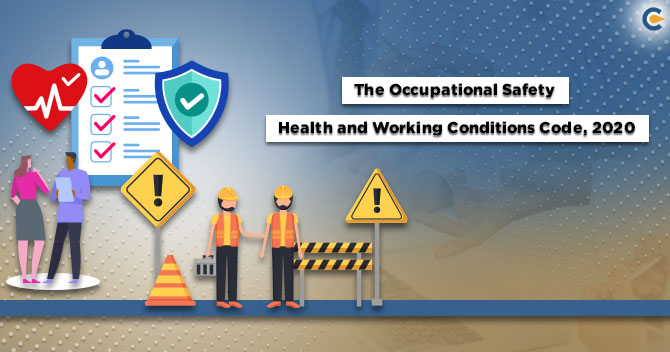The Occupational Safety, Health and Working Conditions Code, 2020 was initiated in Lok Sabha by Minister of State for Labour and Employment on 19th September, 2020. It was again brought up with new changes leading to removal of Occupational Safety, Health and Working Conditions Code, 2019.
Labour category falls under the Concurrent List of the Constitution of India. Consequently, both Parliament and state legislature can make laws regulating the labour sector of the country. The central government has affirmed that there are over 40 central and 100 state laws regulating several aspects of labour like resolution of industrial disputes, social security, working conditions and wages.
Read our article:Medical Relief under Income Tax: An Updated Overview
Consideration of Major Labour Laws
The Code proposed to consider 633 provisions of 13 main labour laws into a single Code with 143 provisions. The laws being considered are:
- The Cigar and Beedi Workers (Conditions of Employment) Act, 1966
- The Building & Other Construction Workers (Regulation of Employment and Conditions of Service) Act, 1996
- The Cinema Theatre and Cine Workers Act, 1981
- The Dock Workers (Health, Safety and Welfare) Act, 1986
- The Contract Labour (Abolition and regulation) Act, 1970
- The Factories Act, 1948
- The Inter-State Migrant Workmen ( Conditions of Service and Regulation of Employment) Act, 1979
- The Mines Act, 1952
- The Motor Transport Workers Act, 1961
- The Plantations Labour Act, 1951
- The Working Journalist (Fixation of rate of wage) Act, 1958
- The Sales Promotion Employees (Conditions of Service) Act, 1976
- The Working Journalist and other News Paper Employees (Conditions of Service and Miscellaneous Provision) Act, 1955
Key changes in Occupational Safety, Health and Working Conditions Code, 2020
The Major changes in Occupational Safety, Health and Working Conditions Code, 2020 are as follows-


- It is not obligatory for workers to work for more than 6 days a week and will be permitted for one day off every week;
- The organization employing 100 workers will be responsible to provide canteen facility for the workers;
- The limit of female workers for the purpose of creating play school facility for the children below 6 years will increase from 30 female workers to 50 workers;
- The employment of female employees for working past 7 pm till 6 am’ provisions are being implanted related to their consent and working conditions related to holiday, safety & working hours;
- The Code has prepared for maximum registration process to be initiated electronically and thus there will a minimum physical contact;
- Provisions related to employers of plantations and liabilities of contractors & inter-state migrant workers have been inserted;
- Key definitions of terms like Banking Company, Wages, and Core Activity of any organization has been inserted;
- In view of Covid-19 pandemic, the Central Government reserved the power to make guidelines for general safety of the common people in the event of an epidemic, pandemic or any disaster. The guidelines should not be affected by any other law being in force;
- Employers of construction business are not allowed to hire workers with deafness, defective vision, or a tendency for dizziness leading to risk of accident.
- Employees working in Sales Promotion, Journalism & Transport have special working hours and specified leave requirements;
- According to The Factories Act[1] if any organization has 500 or more workers, after implementation of this Code, limit will be reduced to 250 workers.
Conclusion
Occupational Safety, Health and Working Conditions Code, 2020 is required to bring a major reform with relation to terms of health, safety and welfare of workers. It is also going to reduce the burden on employer by substituting multiple registrations into one common license. Generally the Code intends to empower both employees as well as employers.
On one side it permits elasticity in hiring and economizing on other side it will develop the social security for both formal as well informal workers. Besides, procedures and clarifications will be recognized by Rules and Regulations made under the Code by the Government.
Read our article:Is BSCI Certification a standard label: Lets Understand BSCI Audit and BSCI Compliance
THE-OCCUPATIONAL-SAFETY-HEALTH-AND-WORKING










